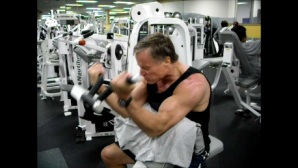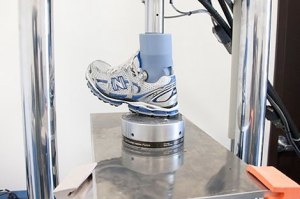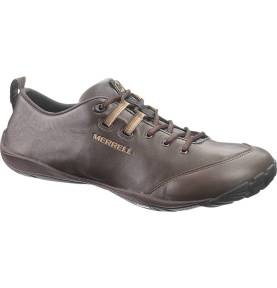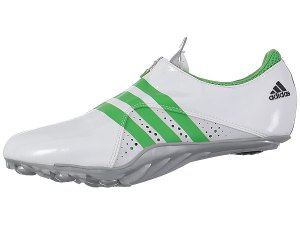![B000069DO9[1]](https://menfightingfifty.files.wordpress.com/2011/08/b000069do91.jpg?w=600) You might be following Men’s Health Magazine, WebMD news updates for men’s health, or even the John’s Hopkins “Health After 50” newsletter. I follow all of these and more, and constantly wonder what impact they have on the health of middle-age men.
You might be following Men’s Health Magazine, WebMD news updates for men’s health, or even the John’s Hopkins “Health After 50” newsletter. I follow all of these and more, and constantly wonder what impact they have on the health of middle-age men.
For example, a recent newsletter carried the article: “Diabetes and sex: Don’t Give up Hope.” It’s a 1,000+ word article that ends up telling you to take Viagra, Levitra, or Cialis. Or, to inject a drug or stick a suppository into your urethra. That’s big news for us guys, right?
Here’s another one from Johns Hopkins: “Drive Safely this Labor Day-Accident rate goes up over busy Holiday Weekend.” Gee, let me think if I’ve heard that before. Too imagine that someone over 50 doesn’t know this already is to imagine a chef not knowing how to fry an egg.
On the other hand, here’s one that assumes you’re earning a medical degree! “A Closer Look at Strokes.” It’s an exhausting 5,000 word article – 4 pages – that’s so scholarly it’s appropriate for a third year medical student. If you actually wade through all this, all you’ll learn is that you need to lose weight, stop smoking, control your blood pressure, and see your doctor for treatment. Hmmm…tell us something we don’t already know.
one that assumes you’re earning a medical degree! “A Closer Look at Strokes.” It’s an exhausting 5,000 word article – 4 pages – that’s so scholarly it’s appropriate for a third year medical student. If you actually wade through all this, all you’ll learn is that you need to lose weight, stop smoking, control your blood pressure, and see your doctor for treatment. Hmmm…tell us something we don’t already know.
“Spiriva: A New Drug Treatment for Asthma?” is a full-page of fine print in a 50+ newsletter, for a condition that affects mostly young people, and decreases with age. COPD is much more prevalent, in smokers (of course you knew that already), and one of the top ten causes of death in middle age and older men. Unless you have a kid with asthma, you’re not going to be much interested in Spiriva.
I could go on, but I’m sure you get the point. I’ve basically covered all of the major health concerns for middle age men in these 25+ posts. The rest is fluff and boring details. I’ll continue looking for interesting news and information that comes up. Right now there isn’t that much going on. Unless, of course, you want to know what “Rheumatoid Arthritis: Watch What You Eat” has to say. Just go to www.healthafter50.com. If you want the printed newsletter, it’s $5 per issue.
 Actually, on a final note, we should do a survey on how
Actually, on a final note, we should do a survey on how  many men improved their health by looking at the sculpted hard bodies on magazine covers. These gym rats shoot steroids, obsess endlessly with their bodies, and starve and dehydrate for the photo shoot. And, Viagra aside, how many of us became better lovers by taking the unproven performance-enhancing products that promise to make you a bedroom Superman?
many men improved their health by looking at the sculpted hard bodies on magazine covers. These gym rats shoot steroids, obsess endlessly with their bodies, and starve and dehydrate for the photo shoot. And, Viagra aside, how many of us became better lovers by taking the unproven performance-enhancing products that promise to make you a bedroom Superman?
There’s no doubt that information is good, and can give us the tools to a healthier body and a better lifestyle. However, it’s not only what is said, but how they say it. Health writers need to stop insulting the intelligence of guys who have been around for a few decades, and they need to stop wasting our time by making us read 3,000 word articles just to get a point or two across.
 Guys who want to be like Superman or live forever have hundreds, even thousands of supplements – tablets, capsules, liquids, gels, or powders to choose from. In fact, there are more than 50,ooo on the market. If there are so many wonderful products, then why are many of us still packing extra belly fat or going around with high levels of sugar or cholesterol? Because most of them don’t work.They also have little or no effect on stress, depression, aching joints, or anxiety.
Guys who want to be like Superman or live forever have hundreds, even thousands of supplements – tablets, capsules, liquids, gels, or powders to choose from. In fact, there are more than 50,ooo on the market. If there are so many wonderful products, then why are many of us still packing extra belly fat or going around with high levels of sugar or cholesterol? Because most of them don’t work.They also have little or no effect on stress, depression, aching joints, or anxiety.
As an individual, you may be lucky to have a positive result of some sort. But, don’t try to push it on everybody else. We all have a different biochemical blueprint, and there is no predictable benefit with most supplements. Yet there are a few worth considering, and it’s good advice to take a multi-vitamin as insurance. Because there are too many to list let alone describe, this will be a short common sense guide with references to whatever else you need to know.
 Here’s why supplements are a multi-billion dollar industry:
Here’s why supplements are a multi-billion dollar industry:
- Exotic – they have fancy names and gorgeous models promoting them.
- Expensive –body builders and some athletes will spend hundreds a month.
- Alluring – anything in a slick ad that promises a better body will have customers.
- Promising – you’ve tried everything, now someone tells you there’s a magic pill.
Baby Boomers and Nutritional Supplements – Health conscious baby boomers fighting against aging increasingly turn to supplements to ward off ailments. Vitamins, minerals, and herbs migrated from health food stores to mass merchandisers, and the supplement industry experienced sales to $26 billion in 2009.
Why many supplements are a waste of money – one example – Techmedica Health sold worthless products on Internet sites, fraudulently marketed as dietary supplements. The company earned $12 million dollars between 2005 and 2006. Owner Tony Pham on admitted guilt in court and forfeited these earnings to the government. There are enough examples of companies selling useless and even harmful products to fill a book. The problem is, many of them are getting away with it.
What can you do?
- Beware of testimonials from customers, hard bodies, and even physicians and nurses.
- Know that most are unproven: Federal law prohibits claims they can treat, cure, or prevent specific diseases.
- Even if it works, forget results in 6 to 12 weeks. Try six months, a year, or even 5 years.
- Buy major brands: The FDA doesn’t routinely test supplements for quality, but some manufacturers follow Good Manufacturing Practices (GMPs) and make every effort to produce a quality product.
- Define your goals: lose weight, improve athletic performance, build muscle, reduce stress, treat an injury, have more energy, sleep better, increase sexual performance, or treat a health condition.
 What’s in them: vitamins, minerals, herbs, amino acids, enzymes, organ tissues, glandulars, herbs, and/or metabolites.
What’s in them: vitamins, minerals, herbs, amino acids, enzymes, organ tissues, glandulars, herbs, and/or metabolites.
- International note: German physicians frequently prescribe the herbs ginkgo biloba, hawthorn, St. John’s wort, horse chestnut, and saw palmetto. German law allows herb manufacturers to market herbs with drug claims if the herb is proven safe and effective.
Which weight loss supplements work?
Products claim to decrease appetite, block fat absorption, or increase metabolism. A few may actually be safe and helpful during a diet. These have some weight loss evidence behind them:
- Calcium – research is controversial however.
- Fiber – for men about 35 g a day. Most only get half the amount.
- Conjugated linoleic acid (CLA) 3.2 g a day
- Green tea extract can work. If it is decaf, not as good.
- Meal replacements work well if used as directed.
- Orlistat, an over-the-counter weight loss drug (brand name Alli), blocks fat absorption.
 Click on these for more detailed references:
Click on these for more detailed references:
- Vitamins and Minerals
- Antioxidants: Beta-carotene ,Lutein, Lycopene,Selenium, Vitamins A, C, and E
- Herbs: 50 herbs described by National Institutes of Health
- Glucosamine and chondroitin: prove recently to be ineffective
- Echinacea
There are more than 54,000 dietary supplements, and only a third are positively supported by scientific evidence. 12 percent have safety concerns or problems with product quality.
These are bad for you: aconite, bitter orange, chaparral, colloidal silver, coltsfoot, comfrey, country mallow, germanium, greater celandine, kava, lobelia, and yohimbe. The FDA has warned about at least eight of them, yet they are not banned. Keep a supplement blacklist, starting with these
These are safe for most people and effective for certain conditions:
- Calcium, cranberry, fish oil, pygeum,
- Lactase, lactobacillus, psyllium
- SAMe, St. John’s Wort, vitamin D
- Green Tea may improve endurance and burn fat
Doctors selling nutritional supplements have a financial stake in promoting health product and represent a conflict of interest. The
American Medical Association advises that physicians who provide nonprescription health products give them for free or at their own cost.
http://www.consumerreports.org/health/natural-health/dietary-supplements/safe-supplements/index.htm
- National Institutes of Health, Office of Dietary Supplements. http://ods.od.nih.gov
- U.S. Food and Drug Administration Center for Food Safety and Applied Nutrition (2001). “Overview of Dietary Supplements.” Available from http://www.cfsan.fda.gov/~dms
- Guide to over 200 supplements: http://www.consumerreports.org/health/natural-health/index.htm
- WebMD Vitamin and supplement center http://www.webmd.com/vitamins-supplements/default.aspx
 What’s the best dose?
What’s the best dose?
Too much of anything can give you side effects, make you sick, or be wasted in your urine or feces. Not enough of some, like vitamins and minerals, will lead to problems. Dosing is individual, and complex. Ask your pharmacist or dietician. Most doctors probably won’t know.
End Note: Nothing, of course, beats a healthy diet. Use government sites – that’s where everybody else gets their information from. See the blogroll for a few. Buy only major brands made in developed countries – the U.S., Japan, Europe, etc. Take supplements in moderation and to suit your individual needs.
The Metaphor Diet – Mind v. Food for Natural Weight Loss
 The brain naturally thinks in metaphors. “Comfort food” describes certain foods that bring about a warm, secure feeling.
The brain naturally thinks in metaphors. “Comfort food” describes certain foods that bring about a warm, secure feeling.
We can create our own metaphors – we can learn to look at a piece of cheesecake or a box of donuts and feel the effort it takes to do a four mile run, or a two hour mountain hike. The bad food that we’re not supposed to eat gets hard-wired to another place in our brain, becomes “discomfort food,” and is much less tempting. It’s all based on solid psychological research, put here it is put in plain English.
For example: A Big Mac and French Fries
You treated yourself to McD’s Big Mac and french fries for lunch. When you get home from work, you can burn it off by:
3 hours of golf with no cart, OR
an hour and 15 minutes of kick boxing
For dessert you had a dish of Cookies & Cream Ice Cream. Choose your payback:
jump rope for 45 minutes
shoot baskets for 1.5 hours
What kind of diet is this? It’s not really – it’s just an eating plan. To make it work, however, there’s one absolute requirement:
You need to PHYSICALLY DO THE EXERCISE it takes to burn those calories.
 You can’t just look at food and exercise charts and get it. Choose your exercise before you even take the first bite, then go sweat it off as soon as it’s practical. The ice cream and pizza will lose their appeal, on a very deep level. No more guilt, and goodbye gut! We all have our favorite fattening foods, and we know what they are. Target those. Body memory will take care of the rest.
You can’t just look at food and exercise charts and get it. Choose your exercise before you even take the first bite, then go sweat it off as soon as it’s practical. The ice cream and pizza will lose their appeal, on a very deep level. No more guilt, and goodbye gut! We all have our favorite fattening foods, and we know what they are. Target those. Body memory will take care of the rest.
You can reward yourself with healthy foods: Your wife serves up a pound of steamed mixed veggies and a hard-boiled egg. To burn this off, you’ll have to watch the game or a movie for two hours! Fun:) There’s nothing wrong with creating a positive metaphor for healthy foods.
Some foods aren’t completely out of the picture:
You went to the Outback and had a lean 10 oz Ribeye: 45 minutes of singles tennis OR 1 hour of hitting the heavy bag.
BUT Double those activities if you had a glass of wine and a baked potato with the trimmings. (Tip – eat a 6 oz Ribeye and minimize the potato toppings).
These calorie counts are close, but not exact, and they don’t have to be. The important thing is that the desire for unhealthy foods will change based on the brain’s creation of metaphors and the bodies memory of the physical activity. It’s a mind-body approach.
All you need to do from now on is match the calories of a specific food with the amount of calories burned during exercise. Just look at the calorie count on the package or from a food chart. See how much jump rope, or hitting a heavy bag (or whatever) you need to do. There’s plenty of ways to burn fat if you can’t make it to the gym. It’s a lot easier to associate a medium piece of cheesecake with an hour of stationary cycling than to go back and forth counting calories every time. Combo pizzas and Hagen Daas will become some of the last things on earth you want to eat.
See the older post on burning off one bite of a cookie.
Interesting facts and recent and somewhat controversial research:
Running for 30 minutes at 6 mph burns the same as walking 3 mph for one hour.
Eating fruits or vegetables in the same calorie amount as cheeseburgers or desserts keeps people feeling full longer.
The body does not burn more calories at rest after exercise, it actually burns less.
Strength training before cardio burns more fat than doing the cardio first.
Charts and References
Cals burned by a 200 lb man walking. Multiply calories by number of miles for longer walks:
- 2 mph – 30 minutes per mile 114 cal
- 3 mph – 20 minutes per mile 106 cal
- 4 mph – 15 minutes per mile or faster 114 cal
- 5 mph – 12 minutes per mile or faster 145 cal
http://walking.about.com/library/cal/uccalc1.htm
Find calorie and body measurement charts using these links. Also see links on the blogroll.
Estimate the average calories you burn per hour. Example for the “average” man:
Sedentary: 2326 daily, ave 97 per hour.
Moderately active 2791 ave 116 per hour
Extremely active 3721 ave 155 per hour
http://walking.about.com/cs/calories/l/blcalcalc.htm
 Calories per Mile for 160 Pound Person Walking:
Calories per Mile for 160 Pound Person Walking:
2.0 mph – 91 2.5 mph – 87 3.0 mph – 85 3.5 mph – 83 4.0 mph – 91 4.5 mph – 102 5.0 mph – 116
Running:
5.0 mph – 116 6.0 mph – 121 7.0 mph – 119 8.0 mph – 123 9.0 mph – 121 10.0 mph – 131
Weight is a Big Factor for Calories Burned – The more you weigh, the more calories you burn, but if you wear a pack or weighted vest that adds 20 pounds, you only increase your calories burned per mile by about 11-12, and it may be hard on your joints.
- Go Faster? – It doesn’t really matter if you’re running the same distance.
- Go Longer? Whether walking or running, you burn the most calories by adding distance.
- Should I Walk or Run? Do what you most prefer. You just need to spend more time if you’re walking.
http://walking.about.com/od/calorie1/a/calorieswalkrun.htm
Activities for a 200 lb man in calories/hr
- boxing heavy bag 540 cals
- shooting baskets 400 cal/hr http://caloriecount.about.com/calories-burned-basketball-a377
- billiards 220 cal
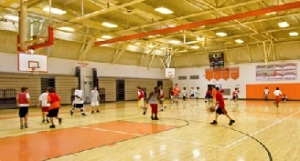 golf no cart 400 cal
golf no cart 400 cal- kick boxing, karate 900 cal
- singles tennis 720
- doubles tennis 450
- shuffleboard, lawn bowing 270
- moderate jump rope 800
- sex, active 135 (this must be wrong) per session
- http://caloriecount.about.com/activities-running-ac12
- jogging 6mph 907 cal
- guitar playing standing 275 cal
- guitar playing sitting 180 cal
- swim slow-moderate 635
- bicycling 12-14 mph 725
- http://caloriecount.about.com/activities-sports-ac15
- http://caloriecount.about.com/
FOOD BROWSER – examples (many more online) http://caloriecount.about.com/nutrition-information
Medium apple 182 g 95 cal Small box raisins 28g 90 cals McD Big Mac 700 cal McD double cheeseburger 6 oz 165 g 440 cal
McD med french fries 4 oz 117g 380 cal Grande Starbuck’s Caffe Latte 272 cal Pizza, Round Table pepperoni 1 large slice 120g 320
carrots 1 cup chopped 128 g 52 cal Reeses peanut butter cups 4.3 oz 120g 360 cal Hershey bar 1.6oz 240 cal Jenny Craig Brownie 2 oz 57g 160 cal
Vanilla ice cream ½ cup 72 g 145 cal Weight Watcher’s “Giant” Choc Fudge Sundae Cup 132 g 160 cal Glass of wine 5 oz 113 cals
Cookies & Cream Ice Cream ½ cup 102 g 270 cal Rib Eye, 9.8 oz 276 g 566 cal (active man max reccomended is 196 g 7 oz = 404 cal)
http://caloriecount.about.com/calories-beef-rib-eye-small-end-i13098
GOOD LINK:
A detailed 12 week exercise plan, includes diet and tips to get motivated http://caloriecount.about.com/article/partner/exercise_plan
The Sixth Most Common Cause of Death for Men
 Did you guess? Diabetes! Here’s the entire list:
Did you guess? Diabetes! Here’s the entire list:
- Heart Disease
- Cancer
- Unintentional Injuries
- Stroke
- Chronic Obstructive Pulmonary Disease
- Diabetes
- Influenza and Pneumonia
- Suicide
- Kidney Disease
- Alzheimer’s Disease
http://www.missionhospitals.org/Top10CausesofDeathinMen
In middle age men diabetes is a chronic condition, and is interconnected with multiple organ systems and disorders. Nothing comes alone. When we look into the eye, we may find diabetes. When we see a man who is 30 pounds overweight, he’s more than just a guy who wants to get rid of his gut – there is a good chance his blood sugar is elevated. And if he has diabetes, we must also worry about heart disease, high blood pressure, and kidney damage.
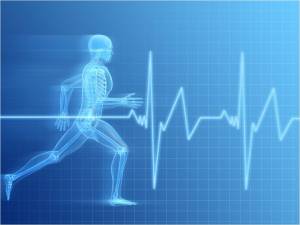 Fortunately by treating diabetes these associated problems will improve. This treatment is, as everyone knows, diet and exercise and a medication regimen if needed. The major hurdle to diet and exercise is education, acceptance, motivation to get on it, and discipline to maintain it. This is a psychological barrier, and chronic depression must be considered and treated if a guy can’t get the desire to take better care of himself. Depressed men are extremely resistant to lifestyle changes that will improve their health.
Fortunately by treating diabetes these associated problems will improve. This treatment is, as everyone knows, diet and exercise and a medication regimen if needed. The major hurdle to diet and exercise is education, acceptance, motivation to get on it, and discipline to maintain it. This is a psychological barrier, and chronic depression must be considered and treated if a guy can’t get the desire to take better care of himself. Depressed men are extremely resistant to lifestyle changes that will improve their health.
Diagnosing diabetes in men means dealing with a cluster of associated problems. These problems can be the reason a man goes to the doctor: erectile dysfunction, loss of vision, kidney disease and nerve damage to the hands or feet. One-third of men who have diabetes don’t even know it! A fasting blood glucose test is the standard screening, but an “AIC test” tells how well your body controls sugar over a period of time. The key is prevention by getting regular checkups and catch the complications before they ruin the quality of your life.
 We are talking about adult-onset type 2 diabetes which can almost always be controlled by maintaining proper body weight and health by diet and exercise. Pills will control your blood sugar but not all the other conditions that are often associated. This condition must be screened, diagnosed early, and managed by a medical doctor. Don’t procrastinate and end up as a chronic patient and a walking time bomb for early death.
We are talking about adult-onset type 2 diabetes which can almost always be controlled by maintaining proper body weight and health by diet and exercise. Pills will control your blood sugar but not all the other conditions that are often associated. This condition must be screened, diagnosed early, and managed by a medical doctor. Don’t procrastinate and end up as a chronic patient and a walking time bomb for early death.
http://www.ehow.com/about_5615378_middle_aged-men-heart-disease.html#ixzz1IEogNlnt
Exercise Gadgets and Your Home Workout
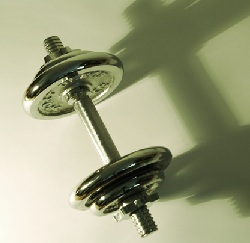 With home exercise equipment, there’s junk to buy everywhere and endless ways to have your wallet picked. The models in the infomercials didn’t get their bodies by using what they’re advertising. It usually says so right in their disclaimer.
With home exercise equipment, there’s junk to buy everywhere and endless ways to have your wallet picked. The models in the infomercials didn’t get their bodies by using what they’re advertising. It usually says so right in their disclaimer.
Most of this stuff has been around for decades. Ab rollers, exercycles, bands and plastic poles are nothing new, they’re just repackaged and sold at inflated prices. There are a few like the Bowflex Home Gym that you can’t find outside of the infomercial. The Bowflex will condition you, but typically costs more than a lifetime membership at 24 Hour Fitness and doesn’t give better results.
Before you buy or add anything to your collection, see if you have the discipline to do a set of push ups and sit-ups everyday for two weeks. If you don’t, the equipment is probably just going to waste space. Having gadgets and equipment around won’t increase your motivation to exercise, at least not for long. Psychological hurdles still need to be overcome. Look for articles, videos, a friend, a trainer, or anything that can trigger you into action. Search the net for motivational material. “The President’s Challenge” is a good site that our taxes paid for.
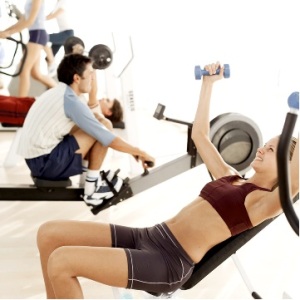 A typical online gadget store has good items like jump ropes, balance boards, etc, but there’s always some garbage to filter out. Make a visit to a well-equipped gym to see what trainers are using and make some notes. Then shop around.
A typical online gadget store has good items like jump ropes, balance boards, etc, but there’s always some garbage to filter out. Make a visit to a well-equipped gym to see what trainers are using and make some notes. Then shop around.
Look at target.com online to find a surprising variety of exercise equipment at low prices.
Click here if you’re interested in off-beat fitness gadgets.
UPDATE! Just added –EXERCISE EQUIPMENT The ultimate link to an endless variety of exercise equipment. It was put together by a fitness expert, and some prices beat target.com. (There is no financial interest here, just a full endorsement).
Don’t buy these exercise gadgets – Consumer Reports gives them bad ratings, and in general they don’t do what they promise:
- Thigh Master, Ab Rocker. Flexaball, Shake Weights, Belly Burner, are among many that are a waste of time and money.
Gadgets that can get you into better condition:
- Stability Ball are good for working out abdominal and back muscles: $10 to $20.
- Fitness Videos can be good for motivation, especially if they’re done by respected sports heroes or celebrities. You won’t use them unless you schedule the time however.
- A Stairstepper – Walking up and down stairs offers a good workout, or buy a step platform, $100 or so.
- Jump Rope improves aerobic fitness, strengthens legs, buttocks. Boxers, wrestlers, and other athletes use jump ropes to train. $10.
- Resistance Bands cheap, portable, take on vacation. Can be used to give most muscles workout. Good for getting back into shape, may be hard to get adequate resistance if you’re in really good condition. Burns calories, starts $10.
- Hand Weights dumbbells offer upper-body strengthening workout. Start around $15.
- Yoga Mat Even if yoga isn’t your thing, mats still come in handy for sit-ups, push-ups, deep knee bends, and other exercises that use gravity. (For example, 10 minutes of jumping jacks burns about 125 calories, assuming a body weight of about 200 pounds.) $15-$20.
- Medicine Ball weighted, and can be used to add intensity to exercises. You can squeeze a medicine ball between your knees while doing reverse curls to strengthen abdominals, for example, or hold it above your head while doing lateral flexes to tighten up oblique muscles. $20 and up.
Great w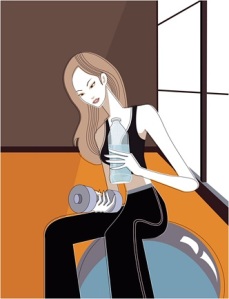 ays to avoid injuries in the gym (but skip the info about shoes – footwear will be in a later post)
ays to avoid injuries in the gym (but skip the info about shoes – footwear will be in a later post)
 Sam shook off his aching shoulder and got ready for another play. “Jim go long, and I’ll hit you when you’re near the end zone.” Jim took off like a rocket and pounded across the field. Sam cocked his arm back and gave it everything he had. Right as Sam released the ball, he felt a snap in his shoulder, and then one of the guys smashed him from the side and knocked him onto his back.
Sam shook off his aching shoulder and got ready for another play. “Jim go long, and I’ll hit you when you’re near the end zone.” Jim took off like a rocket and pounded across the field. Sam cocked his arm back and gave it everything he had. Right as Sam released the ball, he felt a snap in his shoulder, and then one of the guys smashed him from the side and knocked him onto his back.
Racing toward the end zone Jim caught the ball. 32-year-old Harry, a former Trojan tight end, easily caught up with him. It was a perfect throw and a perfect catch, but when Jim cut to the side to get away from Harry, POP went his knee, and he didn’t need to get tackled to go down. But, he was in the end zone, and the sales department beat the engineering department to win the game! Some people all the way over at a picnic table heard the pop, and groaned.
 Game over. Sam couldn’t raise his arm above shoulder level, and Jim had to be helped back to the company table. Somebody called an ambulance because they thought Sam was having a stroke. Might as well take Jim too, because by the time the paramedics arrived on the scene his knee had swelled up like a balloon. Everyone else packed up the leftovers and herded the kids toward the parking lot.
Game over. Sam couldn’t raise his arm above shoulder level, and Jim had to be helped back to the company table. Somebody called an ambulance because they thought Sam was having a stroke. Might as well take Jim too, because by the time the paramedics arrived on the scene his knee had swelled up like a balloon. Everyone else packed up the leftovers and herded the kids toward the parking lot.
-
“So when’s the last time you played ball?” asked the orthopedist.
-
“I was high school quarterback,” said Sam.” We won district.”
-
“That was 30 years ago,” said the doc, looking at his chart. “Have you played since then?”
-
“Once or twice,” said Sam. “It’s like riding a bicycle.”
-
“Do you ride bicycles now?” asked the doctor. He had already figured that Sam had a rotator cuff tear, probably a massive one.
-
“No,” said Sam, “Doc what are you getting at?”
-
“A picture is worth a thousand words. Let’s get an MRI,” the doc said. A few days later. the study showed a degenerative tear with 2 cm retraction – a big gap where the rotator cuff tendon was supposed to be. “It’s going to be a tough surgery, and rehab will take 4-8 months,” said the doc. “Even then you won’t have a normal shoulder.”
-
“You mean my football days are over?” said Sam. He was quite uncomfortable about what the doc had said.
-
“Sam, your football days were over a long time ago,” said the doc. He handed Sam a referral to see an internist for pre-op clearance.
Meanwhile, because of his insurance plan, Jim was having a hard time getting to see an orthopedist, and even worse he had a high deductible. When he finally got in 2 weeks later and got his MRI, it showed a complete ACL rupture, an MCL tear, and a torn meniscus. He was scheduled for a reconstruction. He was only 37 years old.
The typical orthopedic surgeon will see half a dozen men a week with sports injuries, men who are past their prime and go out on weekends to recapture their past glory as star athletes, or guys who just want to have some rough fun. A few beers at the company picnic, a few degenerating joints, and some uneven ground for a playing field can become a middle age nightmare and a surgeon’s dream.
Even men in fairly good shape can end up with weekend warrior injuries. Fortunately, most aren’t as dramatic as Sam and Jim’s.
Bicep Tendon rupture, Rotator Cuff Tendonitis and tears, (tendonitis can occur almost anywhere in the body), Plantar Fasciitis and heel pain, spinal problems…the list goes on, and the injuries are so common that many guys in middle age already know a lot about them. They can sideline someone for a good while. More important than running on with textbook descriptions is the following advice:
-
Do not engage in contact sports or uncontrolled strenuous activity if you’re over 35
-
unless you’re willing to take the pain.
 So what are controlled activities?
So what are controlled activities?
-
Walking, running, swimming, cycling
-
Light weight training, golf, doubles tennis, bowling
-
Hiking, cardio boxing
Uncontrolled activities and contact sports to avoid:
-
Throwing martial arts, contact boxing
-
Baseball, basketball, football
-
Mountain climbing, skiing, snowboarding
In-between activities:
-
Heavier weight training, non-throwing martial arts,
-
Singles tennis, skateboarding, many others
This is just one list. You’ll find many, and you should research your particular activity.
GUYS WHO CAN BREAK THESE RULES should be hardened by years of training, and know the warning signs of injury and how to prevent them. If you’re not sure, get a skilled trainer to put you through the paces and see what your body can handle. Weekend Warriors may get away with it for a while, but it’s almost certain that problems and injuries will begin to add up as you age, become less fit, or over-exert yourself.
Some literature on prevention recommends:
- Maintaining fitness, and regular stretching and strengthening,
- Warm-up and cool-down periods
- Increasing activity level slowly
- Using proper equipment.
- Avoiding hazards, such as poles, fences, broken glass, rough terrain, and rocks.
Don’t be a Weekend Warrior. Be physically fit enough to perform the activities you choose or be at risk for pain and injury.
- http://www.askmen.com/top_10/fitness_top_ten/31_fitness_list.html
- http://emedicine.medscape.com/article/89442-overview
- http://www.wakehealth.edu/Orthopaedic-Services/Stretch-It-Out.htm
- Centers for Disease Control and Prevention. Adult participation in recommended levels of physical activity-United States, 2001 and 2003. MorbMortal Wkly Rep. 2005;54:1208-1212. http://www.nursingcenter.com/prodev/ce_article.asp?tid=927990
- Lee I, Sesso HD, Oguma Y, Paffenbarger RS. The “weekend warrior” and risk of mortality. Am J Epidemiol.2004;160:636-641.
- Kruger J, Ham SA, Kohl HW. Characteristics of a “weekend warrior”: results from two national surveys. Med SciSports Med. 2007;39(5):796
 Middle age and osteoarthritis of the knees: Walter, a 49-year-old heavy equipment operator, could barely climb out of his cab without his knee giving way, and he’s popping his wife’s Vicodin on bad days. Finally, he goes to the doctor and gets an x-ray. “You hardly have any cartilage left in your knees,” says the doctor. “There’s nothing that can be done. I’ll have you see the orthopedist in a few years and he might want to do a joint replacement.” Many doctors can get frustrated treating degenerated knees.
Middle age and osteoarthritis of the knees: Walter, a 49-year-old heavy equipment operator, could barely climb out of his cab without his knee giving way, and he’s popping his wife’s Vicodin on bad days. Finally, he goes to the doctor and gets an x-ray. “You hardly have any cartilage left in your knees,” says the doctor. “There’s nothing that can be done. I’ll have you see the orthopedist in a few years and he might want to do a joint replacement.” Many doctors can get frustrated treating degenerated knees.
But, a lot can be done, before getting that final cure – a titanium and polyethylene knee implant. And, there are some things that shouldn’t be done. Wanting a quicker fix, Walter sees the orthopedist who sends him for an MRI and recommends arthroscopy. “It’s 50-50 but it’s your best chance for improvement,” he says. Walter gets the procedure but he is on the wrong side of the coin toss. Six therapy sessions and six months later, he is having problems – limping, swelling, and sharp pains when he steps off a curb. “The doctor says I have to tough it out until I’m old enough for a knee replacement. He prescribed some pills and told me to lose weight,” he says to his wife. But, treatment by conservative methods can improve symptoms and delay surgery for years, sometimes even indefinitely.
 What should you do? What works?
What should you do? What works?
-
Rehab, rehab, rehab 3 days a week. More on rehabilitation below.
-
Losing weight. Even 20 pounds can make a difference.
-
Apply a cold ice pack after activities and before bed.
-
Use anti-inflammatories as needed, if they don’t make you sick.
-
Use a simple brace or sleeve if it helps you increase activity.
-
Cortisone shots 1-3 times a year during flares can help tolerate exercises.
-
Learn how to properly use a cane, especially if you’re limping.
-
Careful narcotic dosing, but only if it increases activity tolerance.
-
Walking on flat surfaces and cycling.
What doesn’t work:
- Unless you have a big meniscus tear, arthroscopy won’t help much.
- Recent NIH trials for glucosamine and chondroitin show they don’t work. Sorry!.
- Sleeping pills and muscle relaxants can slow you down, interfere with rehab.
- Experimental cartilage injections. If you really want it, go to a university.
- Synvisc or Hyalgan injections might help, but wear off quickly in many.
- Walking on uneven ground, including some hiking trails.
- Jogging or playing singles tennis, unless your totally rehabbed.
- Acupuncture wears off on hours or a couple days. Always choose PT instead.
Physical Rehabilitation. It’s amazing what a dedicated rehab program can do for almost any degenerative joint, especially knees. There are some high-performance athletes with knee arthritis, and even a few marathon runners. They have symptoms, but their well-conditioned muscles minimize them. How rehab works:
 You will see a physical therapist who doesn’t waste your time with heat, ice, or ultrasound. He will take you through a full set of exercises until you are trained to do them correctly on your own. The goals will be:
You will see a physical therapist who doesn’t waste your time with heat, ice, or ultrasound. He will take you through a full set of exercises until you are trained to do them correctly on your own. The goals will be:
- Increased muscle strength in the lower extremities
- Increased cardiovascular and muscle endurance
- Improved reflexes and balance, known as dynamic stabilization
- Guidelines for proper use of a brace or possibly a cane
- Guidelines for sports and other activities that may be hard on your knees
- A customized program that works for you as an individual
Tips on physical therapy
Any doctor can prescribe it. Get 6-12 sessions. Do the exercises at home as directed. Be religious about it. If you aren’t getting a serious sports medicine approach by the second visit, get a referral to a therapist who treats sports injuries.
Special notes about knee rehab and pro football players
Physically rehabilitating an arthritic knee does not happen during six PT sessions, or after a few weeks. Muscles initially will be wasted, and fatigue easily. There will be loss of motion and inflammation. It takes at least 3-6 months of properly performed exercises 2-4 times a week. Improvement can continue for up to 12 or even 24 months. Also, be aware it took years for your knee arthritis to develop. Don’t compare yourself to pro football players who were already highly conditioned before they got sidelined from a knee injury or wear and tear. Pills and cortisone shots can reduce pain and help you tolerate the exercises. A brace can give some support while your muscles are being trained to stabilize the knee. Arthroscopy has been shown to be ineffective in treating knee arthritis.
What makes a man healthy, wealthy, and wise?
 Whatever makes it happen, the news is that the three of them come together. Which of the following do you believe to be true?
Whatever makes it happen, the news is that the three of them come together. Which of the following do you believe to be true?
Good health depends on personal choice and responsibility. People who aren’t healthy are to blame because they know better than to abuse alcohol, smoke, eat junk food, and not exercise.
People can be forced into an unhealthy lifestyle. Unsafe communities, stressful working conditions, and lack of access to good food and adequate healthcare are not their fault.
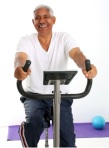 It turns out that both views have a foundation of truth. But what makes or motivates some people to go to the gym and eat their veggies while others park in front of the TV with a beer and a cigarette? A new study reports amazing findings on the role of social factors in health behaviors.
It turns out that both views have a foundation of truth. But what makes or motivates some people to go to the gym and eat their veggies while others park in front of the TV with a beer and a cigarette? A new study reports amazing findings on the role of social factors in health behaviors.
- Health: Adults and children with higher incomes are more likely to eat good diets. Adults with lower income and lower education are more likely to smoke. College graduates were almost 3 times as likely to be in very good health as those who didn’t finish high school.
- Wealth: Families with highest incomes were twice as physically active as those under poverty level. Teenagers in highest income families were 3 times more likely to be physically active.
- Wisdom: Adults who are college graduates: 2.5 times more likely to be active than those with less than a high school education.
 Healthy, wealthy, and wise – they all go together. Why is that? There are some answers in “What Shapes Health-Related Behaviors? The Role of Social Factors” the March 2011 Robert Wood Johnson Foundation study that inspired this post.
Healthy, wealthy, and wise – they all go together. Why is that? There are some answers in “What Shapes Health-Related Behaviors? The Role of Social Factors” the March 2011 Robert Wood Johnson Foundation study that inspired this post.
- Income and wealth shape access to healthy conditions. Low income neighborhoods lack fresh food grocers and safe places for exercise.
- Education means more health knowledge, better problem-solving skills, and fewer risky behaviors.
- Children growing up in stressful conditions are more likely to adopt risky behaviors like smoking and alcohol abuse, which may serve as coping mechanisms.
 The article goes on to say “many Americans live and work in circumstances that make healthy living nearly impossible, even when they are informed and motivated.”
The article goes on to say “many Americans live and work in circumstances that make healthy living nearly impossible, even when they are informed and motivated.”
Good health directly correlates with wealth and education. Is it fair? What should be done about it? Here’s a few ideas from that report:
- We must move beyond the insufficient step of providing information, and improve the conditions in people’s homes, schools, and workplaces.
- Promoting programs such as Earned Income Tax Credit, minimum wage, and Early Head Start programs can give people the ability to make better choices.
- Local programs can help to increase fresh food access and reduce desserts for children.
- Consider universal free breakfast at schools.
- Observe physical education requirements in schools.
- Provide more accessible and safe walking and bicycling routes in communities.
10 recommendations to dramatically improve the health for all Americans:
For further study, there are over 70 references in this RWJF study. Here is the link again:
http://www.rwjf.org/files/research/sdohwhatwhapeshealthrelatedbehaviorsissuebrief20110324.pdf
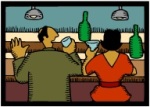 The Robert Wood Johnson Foundation is a non-profit committed to building a healthier America.
The Robert Wood Johnson Foundation is a non-profit committed to building a healthier America.
Author opinion: While it’s our individual responsibility to take care of our health, not everyone has equal access to healthy behaviors. It becomes the responsibility of society to help people be healthy. The quality of life in America depends on it.
Healthy people are also at risk for heart disease
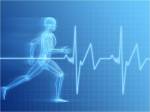 But the more unhealthy you are, the greater your risk. As an adult, it’s well worth the time to update your knowledge about coronary artery disease. Sure, you can learn how much blockage it takes in a coronary artery before you get a myocardial infarction. But unless you’re a cardiologist, you just need to know what to do about it.
But the more unhealthy you are, the greater your risk. As an adult, it’s well worth the time to update your knowledge about coronary artery disease. Sure, you can learn how much blockage it takes in a coronary artery before you get a myocardial infarction. But unless you’re a cardiologist, you just need to know what to do about it.
Having a heart attack is not a one-time deal. Even if you survive this number one cause of death in men and women, you’re stuck with a chronic disease that puts you into a high-risk group for life. You’ll never be the same. Here’s some new facts:
- Aspirin doesn’t lower your risk of having a first heart attack.
- Slim people on good diets and regular exercise have less but still some risk.
- Quitting smoking drops the risk within weeks. Less than a half-pack also lowers it.
- 2 drinks a day only helps if you’re already a drinker. It’s not better to drink red wine.
- Recent studies show extreme exercise – eg marathons – may hurt heart health.
- Sedentary lifestyle is a number one risk factor for heart disease.
- Genetics is big – siblings and parents with early heart attacks are a warning sign.
- Just 20 pounds of extra weight increases the risk.
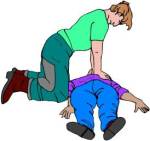 Warning signs! Knowing the warning signs saves lives, maybe yours. If someone has signs of a heart attack, call 911. Don’t drive yourself to the hospital. Paramedics can start emergency care as soon as they arrive.
Warning signs! Knowing the warning signs saves lives, maybe yours. If someone has signs of a heart attack, call 911. Don’t drive yourself to the hospital. Paramedics can start emergency care as soon as they arrive.
- Here’s a great 10 minute slideshow of heart disease and warning signs:
- http://www.webmd.com/heart-disease/slideshow-visual-guide-to-heart-disease?ecd=wnl_hrt_053111
What else is important?
- Check your blood pressure whenever you get the chance. A surprising number of middle age men are going around with high blood pressure and don’t know it. Not getting treatment or skipping medications increases the chance of a heart attack.
- Get your glucose level checked even if you’re not overweight. Mild diabetes easily goes undiagnosed. Controlling blood sugar lowers risk of heart disease.
- Caffeine and stress don’t increase the risk for high blood pressure or heart disease.
- Heart health is always about lifestyle – diet, exercise, moderation, etc. Other posts on this site here cover those and offer many links.
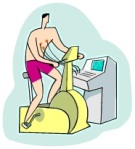 It’s good to get an unbiased cardiologist’s second opinion before a doctor does a procedure on your heart. Not everything has been shown to make a significant difference. Insist on being fully informed, and make sure your investment of time, pain, and money is worth it. Even if it’s a 911 call, you can get a second opinion later.
It’s good to get an unbiased cardiologist’s second opinion before a doctor does a procedure on your heart. Not everything has been shown to make a significant difference. Insist on being fully informed, and make sure your investment of time, pain, and money is worth it. Even if it’s a 911 call, you can get a second opinion later.- Click here to test your knowledge!
More links:
- American Heart Association www.americanheart.org
- www.ehow.com/facts_5030068_heart-disease-symptoms-men.html
- http://www.cdc.gov/dhdsp/data_statistics/fact_sheets/fs_men_heart.htm
- http://en.wikipedia.org/wiki/Myocardial_infarction
